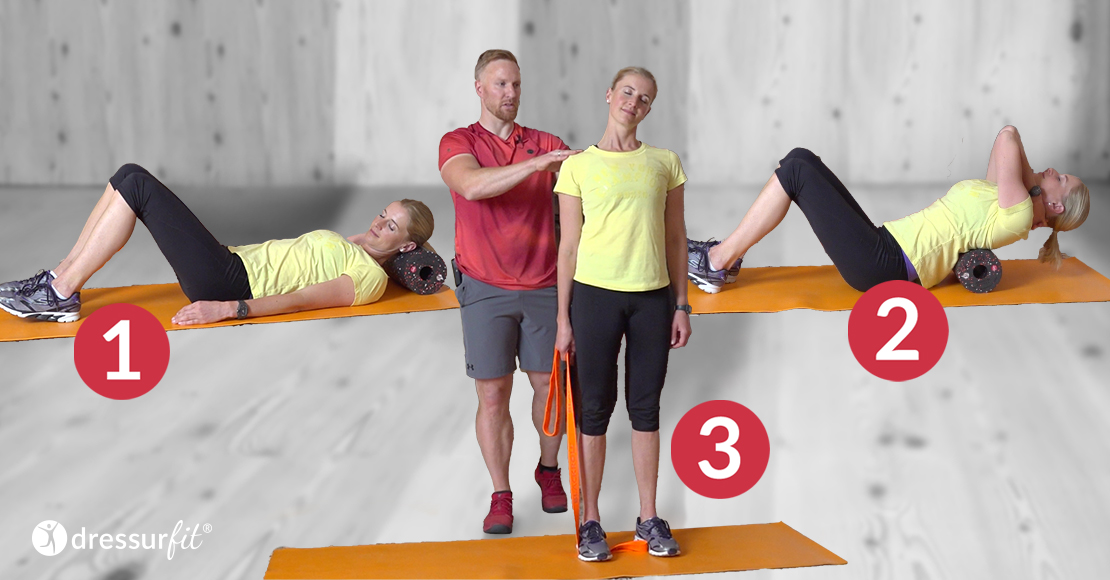
What to do with tense shoulders and a sore neck?
„Our posture, especially that of your upper spine, is crucial for good, pain-free shoulder function”, explains Sports Scientist Marcel Andrä. And here is why: A slouched posture stops your upper arms from moving freely in the shoulder joints. „Unfortunately, this is exactly the position we usually take when we are sitting – in the car, at the desk and sometimes even on the horse”. Sitting a lot increases the muscle tone in the shoulder and neck area, weakens our back muscles and shortens the chest muscles. As a result, you get used to an unhealthy posture leading to discomfort and pain in the back or in the shoulder and neck area. In addition, the shoulder and neck area also reacts very sensitively in response to (emotional) stress. If you are stressed, you automatically pull your shoulders up. When riding, tension in your shoulder and neck area leads to a slouched position, which means that your shoulder joints do not have the suppleness and range of motion you need for a correctly aligned upper body position and to be able to create a steady and fine connection to the horse’s mouth on both reins. Furthermore, the tension from the shoulder area often extends over the entire thoracic spine down to your lower back and hips. With the following three DressurFit® exercises, you can improve the mobility of your shoulders and relieve any tension in the shoulder and neck area.
And here’s another important aspect for more relaxation: „Correct breathing is essential to prevent and treat discomfort and pain in your shoulders and cervical spine area. It improves physical performance, reduces stress by activating the parasympathetic nervous system and thereby also prevents tension in the shoulder and neck area.” There are two types of breathing patterns: diaphragmatic breathing and rib breathing. During intense physical exertion, rib breathing is important, as it uses the shoulder muscles as auxiliary muscles. However, if rib breathing is also your preferred breathing pattern in everyday life, your shoulder and neck muscles tense up and the sympathetic system is dominantly active. In the saddle as well as in everyday life, you should make an effort to use diaphragmatic breathing, which improves relaxation and stabilises your core. To check your breathing pattern, place one hand on your belly and the other on your chest and continue breathing normally. Where can you feel more movement? If the hand placed on your chest moves more, you are using rib breathing. Focus on taking deep breaths reaching all the way into your belly, so that your belly and the hand placed on your belly lift up. That’s diaphragmatic breathing.
To receive further tips and exercises sign up to our FREE English newsletter!
